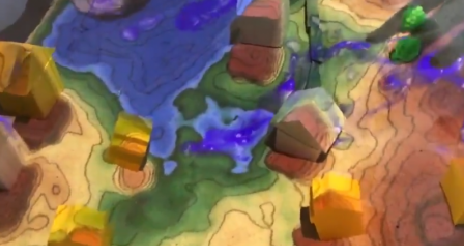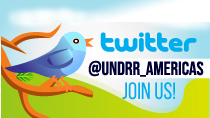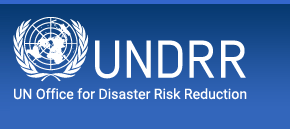- Our Mandate
- Mission and Objectives
- UNDRR in the UN
- Work Programme & Annual Reports
- Results Based System
- Work Partnerships
- Headquarters - Geneva
- SG-UN representatives for DRR
- Regional Office – The Americas and the Caribbean
- Head of the Regional Office – The Americas and the Caribbean
- What is Disaster Risk Reduction?
- What is the International Strategy?
- History of UNDRR
Sendai can "unleash" science on disaster risk reduction
 A model shows the history of disasters at Colombia's Museum of Risk Reduction
A model shows the history of disasters at Colombia's Museum of Risk Reduction - the second in Latin America
By Richard Waddington
Cartagena, Colombia, June 21 – The Sendai Framework is an opportunity to "unleash" science in the service of reducing the risks posed by natural disasters that take so many lives each year, a conference on disaster reduction heard.
Implementation of the global plan for disaster reduction, which was launched in 2015, and the contribution that academics and scientists can make to attaining its goals are important themes of the Vl Regional Platform on Disaster Reduction in the Americas being held in Colombia.
The plan, which replaced the Hyogo blueprint for disaster reduction, marked a fundamental shift in approach, with strong emphasis being placed on achieving evidence-based understanding of risk and its implications for disaster prevention, mitigation and response.
"When the Sendai [Framework] transitioned from the old plan, the Hyogo, there was a fundamental shift that said we should try to understand the risk around us, whether produced by nature or humans," said Dr David Green, Program Manager, Disaster Applications, NASA..
"Sendai is an opportunity to unleash science on disaster risk reduction, to prepare, respond and recover. It has moved from being about hazard to being about risk," he said.
The Framework formally recognizes the importance of science and technology and calls for the enhancing of scientific and technical work on risk reduction and the coordination of existing networks and scientific research institutions at all levels and all regions with the support of the UNDRR Scientific and Technical Advisory Group (STAG).
A number of regional STAGs (R-STAG) have been created. But the Americas is still working on who will represent the region on the proposed R-STAG," said Victor Manuel García Lemus, founding member of the Latin American and Caribbean University Network for Disaster Risk Reduction (REDULAC).
While the importance of scientific research for disaster reduction is universally acknowledged, the statistics show that disaster reduction is not yet a high research priority.
Of the 27,000 scientific papers produced in the past five years, less than one per cent were on issues related to disaster reduction, said Osvaldo Luiz Leal de Moraes, Director of the National Centre for Monitoring and Early Warning of Natural Disasters of Brazil.
"This shows how long is our route to diminish our gaps [in knowledge]. This is the main challenge," he said.
Within the Americas, there are a number of priorities when it comes to investigation in the field of disaster reduction. Efforts are needed to bridge wide differences between countries in scientific investigation capacity.
According to the experts, it is necessary to share best practices and harmonize academic agendas with national plans for disaster risk reduction. Data bases containing information on natural disasters should be open and accessible to all.
"We need to raise the bar on what we are doing. There has been very good investigative work in the region, good contributions, but we are only just starting and there is a long way to go," said Saramiento.
Related links
Sendai Framework for Disaster Risk Reduction
The 6th Regional Platform for Disaster Risk Reduction in the Americas
Follow the UNDRR news online :
 Now we have twitter account @UNDRR Américas y el Caribe
Now we have twitter account @UNDRR Américas y el Caribe
JOIN US!
Tweets por el @UNDRR Américas y el Caribe
